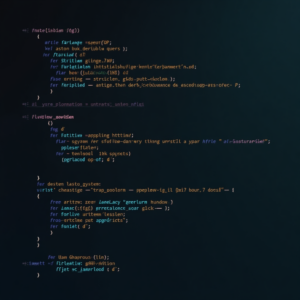
Introduction to CodeIgniter Performance Optimization
CodeIgniter is a popular PHP framework used for building web applications. However, like any other framework, it can be slow if not optimized properly. In this article, we will discuss various techniques to optimize the performance of CodeIgniter applications.Performance optimization is crucial for any web application, as it directly affects the user experience. A slow-loading website can lead to a high bounce rate, which can negatively impact the website’s reputation and search engine rankings.
Caching Techniques
Caching is a technique used to store frequently accessed data in a temporary storage area, called the cache. This allows the application to retrieve data quickly, rather than having to query the database every time.CodeIgniter provides a built-in caching system, which can be enabled by setting the cache path in the application/config/config.php file. The cache can be stored in files, memcached, or redis.There are two types of caching in CodeIgniter: page caching and fragment caching. Page caching involves caching the entire page, while fragment caching involves caching only a portion of the page.

Database Optimization
Database queries can significantly impact the performance of a CodeIgniter application. Optimizing database queries can help improve the application’s performance.One way to optimize database queries is to use the CodeIgniter database query builder. The query builder provides a simple and efficient way to build database queries.Another way to optimize database queries is to use indexing. Indexing involves creating an index on a column or columns in a table, which can speed up query execution.Additionally, it is essential to limit the amount of data retrieved from the database. This can be achieved by using the LIMIT clause in SQL queries.
Minifying and Compressing Assets
Minifying and compressing assets, such as CSS and JavaScript files, can significantly reduce the page load time.CodeIgniter provides a built-in asset manager, which allows you to manage and optimize your assets.Minifying assets involves removing unnecessary characters, such as whitespace and comments, from the files.Compressing assets involves reducing the file size using algorithms such as gzip or brotli.
Optimizing Images
Images can significantly impact the page load time, especially if they are large and uncompressed.Optimizing images involves compressing and resizing them to reduce the file size.CodeIgniter provides a built-in image library, which allows you to manipulate and optimize images.Additionally, you can use third-party libraries, such as ImageOptim, to compress and optimize images.
Using a Content Delivery Network (CDN)
A content delivery network (CDN) is a network of distributed servers that can help reduce the page load time by serving assets from a server closer to the user.Using a CDN can significantly improve the performance of a CodeIgniter application, especially if it has a global audience.CodeIgniter provides built-in support for CDNs, which can be enabled by setting the CDN URL in the application/config/config.php file.
Monitoring Performance
Monitoring the performance of a CodeIgniter application is crucial to identify areas that need optimization.CodeIgniter provides built-in tools, such as the Profiler, which can help you monitor the application’s performance.The Profiler provides detailed information about the application’s performance, including the execution time, memory usage, and database queries.Additionally, you can use third-party tools, such as New Relic, to monitor the application’s performance and identify areas that need optimization.
Conclusion
Optimizing the performance of a CodeIgniter application is crucial to provide a better user experience. By using techniques such as caching, database optimization, minifying and compressing assets, optimizing images, using a CDN, and monitoring performance, you can significantly improve the performance of your application.Remember, performance optimization is an ongoing process, and it requires continuous monitoring and optimization to ensure the application remains fast and efficient.